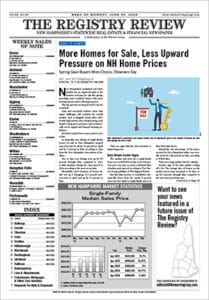Economists are baffled by a wider-than-usual divergence between long-term mortgage rates and the yield on the benchmark U.S. government bond that is driving a sharp rise in borrowing costs and helping to torpedo the U.S. housing market this year.
The gap, or spread, between the 10-year Treasury yield and the average rate on a 30-year mortgage widened this year as inflation hit the highest level in decades and the Fed began raising interest rates and taking other steps aimed at taming surging prices.
This spread has historically averaged around 170 basis points a month, but between March and October 2022 it averaged about 240 basis points, according to Federal Reserve data. In October, the spread widened to 292 points, the biggest monthly gap since August 1986.
“The spread between the 10-year Treasury and the mortgage rate is exceptionally wide, abnormal,” Lawrence Yun, chief economist for the National Association of Realtors said. “If we had a narrowing, or say, a normal spread condition, today’s mortgage rate could be 5.7 percent.”
Mike Fratantoni, chief economist at the Mortgage Bankers Association, agreed: “One of the more puzzling aspects of the current environment has been the extremely wide spread of mortgage rates relative to Treasury rates.”
Rates for 30-year mortgages usually track the moves in the 10-year Treasury yield, which lenders use as a guide to pricing loans. Investors’ expectations for future inflation, global demand for U.S. Treasurys and what the Federal Reserve does with interest rates can also influence the cost of borrowing for a home.
In the first week of January 2022, when the 10-year Treasury yield averaged 1.77 percent and the rate on a 30-year mortgage averaged 3.22 percent, the spread was 145 basis points.
In the months that followed, as bond yields shot upward and mortgage rates doubled from 2021 levels, that spread increased. During the week before Christmas, it was 252 basis-points wide as the 10-year Treasury yield averaged 3.75 percent, while the 30-year home loan rate averaged 6.27 percent. Mortgage buyer Freddie Mac reported that the average on the benchmark 30-year rate increased to 6.42 percent for the week ending Dec. 29, 2022. That is more than double the year-ago average rate of 3.11 percent.
And as recently as the second week of November 2022, the spread swelled to 326 basis points as the weekly average on a 30-year mortgage climbed to a 20-year high of 7.08 percent.
The spread between mortgage rates and the 10-year Treasury yield has widened sharply in the past, generally in periods preceding or coinciding with recessions, as in 2000-2001 and 2008-2009, said George Ratiu, manager of economic research at Realtor.com.
The big increase in mortgage rates has torpedoed the housing market, with sales of existing homes falling for 10 straight months to the lowest level in more than a decade.
While home prices are now dropping as demand has declined, they are still nearly 11 percent higher than a year ago. Higher prices and a doubling of mortgage rates have made homebuying much less affordable and a much more daunting prospect for many people.
Ratiu calculates that the monthly payment for a median-priced home is now about $2,100, before taxes and insurance, up more than 60 percent from a year ago. The median is halfway between the highest and lowest figures.
Several factors are driving the wider-than-normal spread. Inflation and the Fed’s wave of rate hikes has pushed up costs for banks, which are then passed along to borrowers with higher rates.
Earlier this year, the Fed also began reducing its holdings of Treasury and mortgage-backed securities, or MBS.
”What that means, practically, is there’s less money in the lending market to actually reach consumers,” Ratiu said. “That also has an upward effect on mortgage rates.”
Ratiu expects mortgage rates will remain above 6 percent next year and sales to stay low.
“All of these data are indicative of a market going through a major reset, which is the Fed’s goal,” he said.
The Fed has hiked its benchmark interest rate seven times this year to a range of 4.25 percent to 4.5 percent, the highest in about 15 years. It has signaled it may raise them another three-quarters of a point next year.
Associated Press staff writer Christopher Rugaber contributed to this report.

